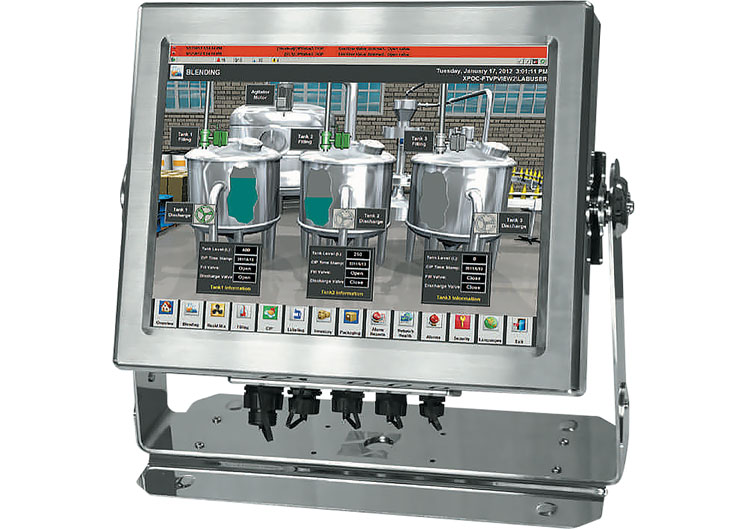Given the potential for gas, vapour or dust to collect in these areas, the electronic equipment installed for automation and control must be designed specifically to prevent unintentional ignition of these elements owing to electrical arcing or other thermal means.
Although much attention is given to the automation system components used to control the process itself, these systems also require computing equipment such as thin clients, panel PCs, remote touch displays, KVM (keyboard, video, mouse) solutions as well as fixed and mobile operator workstations.
Given the risks, this equipment must also meet the requirements for use in areas classified as hazardous and be rugged enough to withstand the harsh chemical and high humidity environments generated during the industrial manufacturing process.
“In industry, the manufacturing, processing, storing and distribution of flammable materials all release gases or vapours into the atmosphere that can result in an explosion or hazard."
"To create a safe and secure working environment, the computing systems at the worksite must, by regulation, be designed to pass the explosion-proof certification and be able to withstand the corrosive environment,” says Paul Shu of ARISTA Corporation, a leading provider of computing platforms and visualisation display products.
Ruggedised computing solutions for hazardous environments
In simple terms, a hazardous classified location is any area, building, commercial or industrial premises likely to be exposed to fire or explosion owing to the presence of flammable gases, vapours, flammable liquids, combustible dust and other similar materials in very high amounts.
Hazardous locations can be classified into various categories according to the nature of the flammable vapours or liquids. In North America, a class/division system is primarily utilised, and regulations related to the design and manufacturing of industrial equipment are formulated by the NEC, CEC, OSHA and NFPA (National Fire Protection Association).
Outside of North America, a similar “zone” system is used to define and categorise hazardous areas and potential risk sources.
To meet the requirements of industrial environments, there are several methods by which equipment can be made flame- and explosion-proof.

For computing systems, equipment manufacturers that serve the market can design and manufacture thin clients, industrial panel PCs and touchscreen PCs that are UL certified, non-incendive (equipment having electrical/electronic circuitry that is incapable, under normal operating conditions, of causing the ignition of a specified flammable gas, vapour, dust, etc. owing to arcing or thermal means) and that meet the requirements for the various classes/divisions/zones within a plant or station.
ARISTA, for example, offers a wide range of panel mount and fully sealed touchscreen PCs for use in industrial settings. The fully enclosed version is constructed of stainless steel and has no external vents. This design protects the components from gases, dust, dirt, moisture, chemicals, oil and other external contaminants in an explosive environment.
According to Shu, the touchscreen PCs in various sizes are routinely deployed as HMI workstations in hazardous industrial operations, which can include the storage and distribution of large volumes of flammable and combustible liquids.
For this type of application, the panel mount PCs are fanless, ruggedised systems certified for use in Class 1 Division 2, Class 2 Division 2, and Class 3 Divisions 1 and 2 hazardous areas. The systems are installed with a Windows operating system and the high-resolution touch creens can be manipulated by operators wearing heavy duty industrial gloves.
The company also offers fanless thin client versions as well, which are increasingly popular in industry as a cost-effective way to develop a virtual desktop for more centralised management. With remote accessibility, it is easier to manage, store and use the data, and IT administrators can conveniently access any device connected to the server and make changes. Moreover, thin clients are easiest to configure, manage and deploy.
To maintain a completely safe industrial working environment, industrial manufacturers must install computing systems and peripherals that meet regulations and security standards for hazardous locations across the globe.
By working with leading providers of computing platforms with experience in the industry, facility managers can obtain the UL-certified, non-incendive, corrosion-resistant thin clients, industrial panel PCs, touchscreen PCs and other critical equipment that will stand up to harsh industrial environments.




